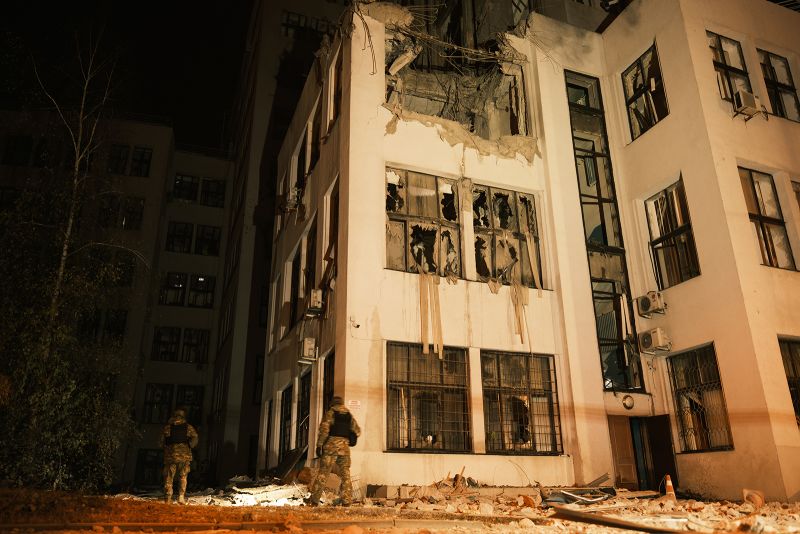In a shocking turn of events, Russia dropped bombs on a historic Soviet-era skyscraper in Kharkiv, Ukraine. This incident marked another disturbing milestone in the escalating conflict between the two nations, highlighting both the human and cultural cost of war. The building in question, the House of State Industry or Derzhprom, is an emblem of Soviet modernist architecture, serving as a potent symbol of the nation’s convoluted history.
Erected in the early 20th century, the House of State Industry stands as one of the earliest and tallest skyscrapers in Ukraine as well as the former Soviet Union. Constructed between 1925 and 1928, the architectural giant was once the tallest building in the Soviet Union, which was a testament to the nation’s ascension as an industrial power.
The building, located in Freedom Square, the heart of Kharkiv’s city center, instantly became a central hub of commercial and administrative activity. Its unique architecture, consisting of a series of interconnected blocks with a matching theme of straight lines and right angles, perfectly exemplified Soviet Constructivism.
The unexpected attack on this historic skyscraper inflicted significant structural damage and profoundly impacted historical and cultural preservation efforts. The strike has resulted in a profound loss, not only for Ukraine but also for architectural enthusiasts and historians worldwide. The bombing signaled a disregard for cultural heritage and international principles that protect such sites during conflict.
The international community has expressed its dismay and condemnation over the act that blatantly ignores the principles of the 1954 Hague Convention. This international treaty, agreed upon following the devastating consequences of World War II, advocates for the protection of cultural property during times of war. It outlines the commitment of armed forces to respect cultural property, abstain from using such sites for military purposes, and refrain from any acts of hostility directed against them.
Such loss of cultural heritage can have substantial consequences on societal identity and national morale. The bombing of the Derzhprom building can thus be seen as a direct assault on Ukraine’s cultural identity and history. The site served as a visible reminder of the significant technological and industrial advancements that the region achieved during the Soviet era.
For many Ukrainians and historians, the destruction of the Derzhprom skyscraper is a symbol of the disregard shown by Russia for preserving cultural identity during conflict. This act seemingly aimed to erase shared historical narratives and societal identity, further escalating the tension and despair.
The global community academics, architectural conservationists, historians, and even ordinary citizens keen on preserving the rich tapestry of world history, expresses profound grief over this incident. The bombing of the historic Derzhprom building underscores the lamentable truth that in times of war, the cultural heritage that defines and unites nations can become a casualty.
The devastation has prompted a plea for reinforcing and respecting international humanitarian law that serves to protect cultural heritage. It underscores the urgent need for nations to revisit the rules of warfare, strive for their strict enforcement and acknowledge the irreplaceable value of cultural heritage.
These international tragedies are a harsh reminder of the need for peaceful resolution of conflicts. While wars can destroy physical structures, they cannot erase history and shared experiences that live in hearts worldwide. As we come to terms with the loss of the iconic Soviet skyscraper, it is crucial to recall that these architectural treasures bear a witness to our shared human history. It is our collective responsibility to safeguard these pillars of our collective cultural heritage.




